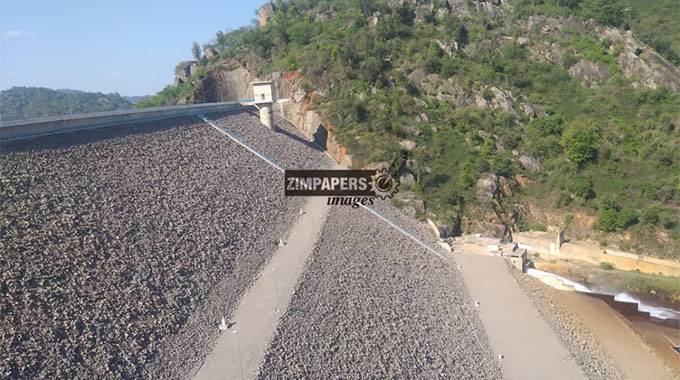
George Maponga in Masvingo
Tugwi-Mukosi Dam is set to spill for the first time ever in the current rainy season, allowing the river to flow unimpeded downstream during a rainy season that is above normal.
Seven years ago, in the first heavy rains in the basin and long before the dam was completed and blocked river flows, many people had to be moved as the river levels rose and flooded low -lying areas.
The dam, commissioned in 2017, is the country’s largest inland water body with a capacity of 1,8 billion cubic metres and has been capturing most of the water from upstream sources since it was completed.
The Zimbabwe National Water Authority (Zinwa) yesterday said the dam was now 83 percent full following incessant rains in its catchment since December last year.
The previous highest level was 78 percent full.
Zinwa and other relevant arms of Government are running awareness campaigns in low lying areas downstream areas in case the dam spills and the inflows, and thus the resulting outflows, continue significantly higher than normal and so could cause flooding.
The authority’s marketing and communications manager Mrs Marjorie Munyonga said water levels in Tugwi-Mukosi were continuing to rise.
“Between December 24, 2020 and January 17, 2021 the lake (Tugwi-Mukosi) received 20 percent (360 million cubic metres) of its 1,8 billion cubic metres storage capacity and as at January 18, the lake was 83 percent full raising the possibility of it filling up this rainy season,” said Mrs Munyonga.
“Zinwa, working with relevant arms of Government, is engaging communities in downstream areas of the dam with a view to creating awareness in the event of flooding should the lake spill.”
Zinwa would continue to closely monitor the situation and keep stakeholders updated on the situation in the dam.
“Zinwa would, however, wish to assure all its valued stakeholders that precautionary measures have been put in place to ensure safety of the lake’s structure and ensure minimum damage to the environment in the event of the momentous occasion of the lake spilling.”
Seven years ago, Government was forced to perform the mass evacuation of people following flooding in the Tugwi-Mukosi basin, long before the dam started blocking river flows.
More than 3 000 families together with their livestock and property were evacuated to Chingwizi temporary camp in Mwenezi, about 180kms away.
Tugwi-Mukosi is located at the confluence of Tugwi and Mukosi Rivers.
It was built by Government at a cost of nearly US$270 million over a period of almost 18 years.
Initially, Tugwi-Mukosi was billed to irrigate 25 000 hectares of land but advances in irrigation technology have seen the figure being revised to 40 000ha.
